Of course, the main reason to use sugar is to sweeten things – from cakes to cookies and even drinks – but it does more than that. It is also great for adding texture, in bread making it is used to help bread rise and in savoury cooking it is used to add depth of flavour.
I was prompted to do more research on sugar after a reader asked me a question about a type of sugar I use almost daily – caster sugar.
In this Baking Essentials post you’ll find a list of the most common types of sugar used in baking (not even close to exhaustive) and their best uses as well solving the mystery behind those sugars that you see in recipes but have no idea what they are.
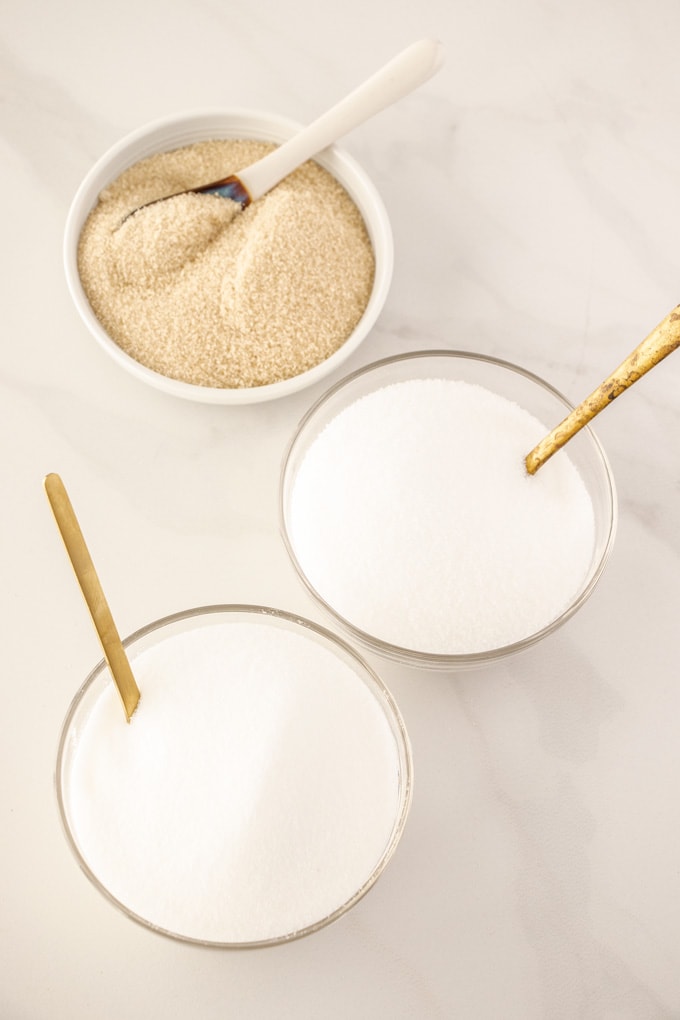
Top to bottom – Golden Caster Sugar, Granulated Sugar, Caster Sugar
What is granulated sugar?
When most people think of sugar, this is the one they’re thinking of. This is a refined white sugar with medium sized crystals that is the most readily available. It is used in baking and for sweetening drinks.
What is caster sugar?
Caster sugar is granulated sugar that has been ground into very fine crystals. Those very fine crystals mean it dissolves much quicker and easier making it a great sugar to use in things like meringues. The smaller crystals are also helpful when creaming together butter and sugar, resulting in a fluffier texture.
Caster sugar is commonly found in Australia and the UK but not so well known in the US, where it is instead known as superfine sugar or bakers sugar.
When it comes to a regular baking sugar, this is the one I and many bakers use most. It also saves on pantry space as caster sugar can always be used in place of regular granulated sugar but not necessarily the other way round.
Both granulated and caster sugar are wonderful for making homemade vanilla sugar.
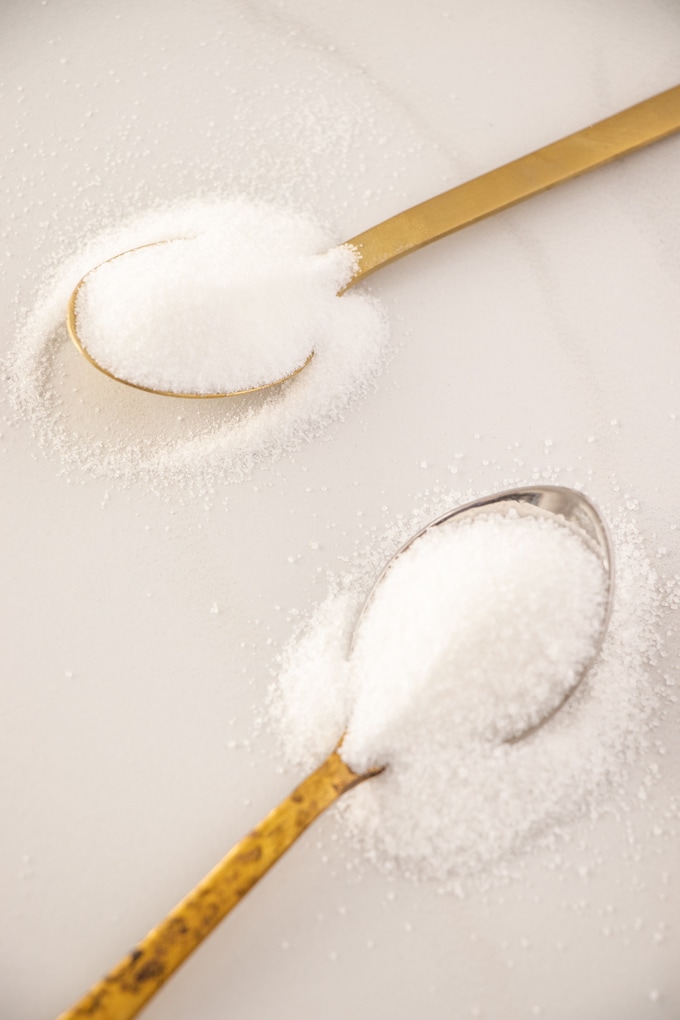
Top to bottom – Caster sugar, Granulated Sugar
How to make caster sugar?
You can actually make your own caster sugar. If you can’t find it or you find it is a little too expensive where you are which may be the case in places it is not so easily found, you can use a food processor to grind regular granulated sugar down to finer crystals. That’s it.
Is caster sugar the same as powdered sugar?
No. There seems to be different opinions when searching for an answer on this question and I can guarantee you caster sugar and powdered sugar are two different things.
Names / Variants
Granulated Sugar | Caster Sugar | Superfine Sugar | Bakers Sugar | Golden Caster Sugar
What is icing sugar?
Icing sugar (shown below) is a sugar that is ground to a very fine powder and has a little anti-caking agent (corn flour / cornstarch) added so that it doesn’t cake together.
Are powdered sugar and icing sugar the same thing?
Yes, they are. Also known by the names powdered sugar and confectioners’ sugar, icing sugar is used most often in icings and frosting. The name makes sense now, right?
It is also the main ingredient in cake decorating ingredients like fondant and flower paste and in candies like peppermint patties and butter mints.
Is caster sugar the same as icing sugar?
No, it’s definitely not. Caster sugar is fine crystals whereas icing sugar is a powder and they perform very differently if used in baking.
How to make icing sugar
The great part is you can make homemade icing sugar. Just use a very powerful blender to grind regular granulated sugar and corn flour (cornstarch) at a ratio of 1 cup sugar to 1 tablespoon* corn flour until you have a very fine powder.
*The tablespoon used in above is a US standard (equivalent to 3 teaspoons). Important to note if you’re in Australia where the standard tablespoon is 4 teaspoons.
What is pure icing sugar?
Pure icing sugar is icing sugar that does not contain any anti-caking agent. This type of sugar is often used in macarons as it gives a crisper texture but it does often require a double sift to remove lumps before you use it.
Names / Variants
Icing Sugar | Powdered Sugar | Confectioners’ Sugar | Pure Icing Sugar
What is brown sugar?
Brown sugar comes in many different varieties and is either unrefined or only partially refined. The brown colour in brown sugar comes from molasses which is not removed as it would be in the refining process of white sugar.
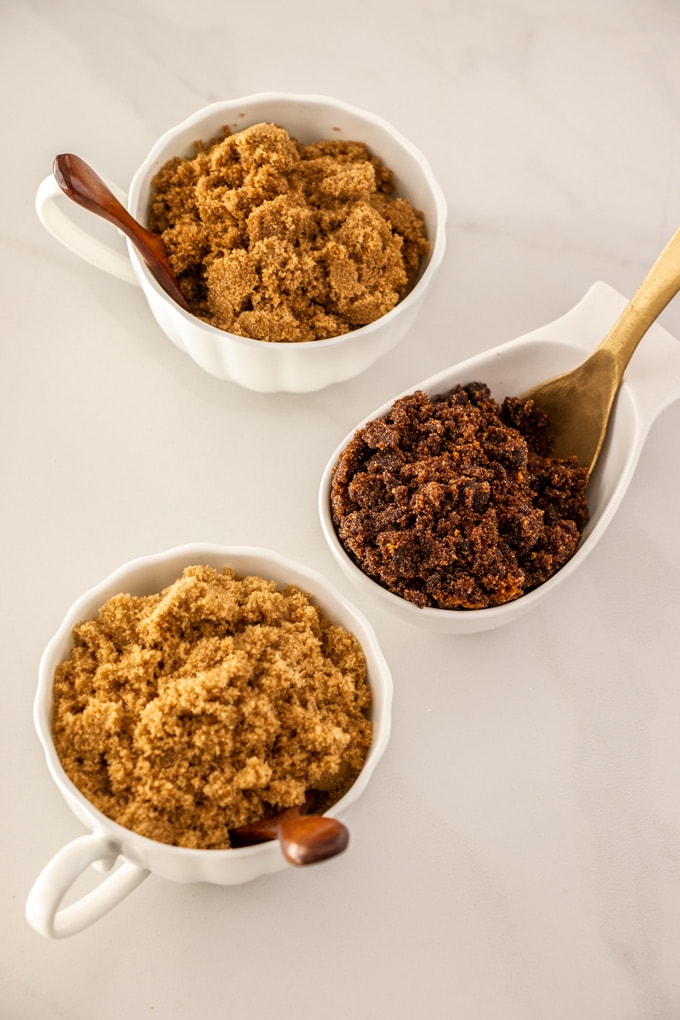
Top to bottom – Dark Brown Sugar, Dark Muscovado Sugar, Light Brown Sugar
Brown sugar has a damp quality to it so that it looks a little like wet sand. This moisture comes from the molasses and the darker a sugar is, generally, the stickier it is.
Brown sugar substitute
White granulated sugar or caster sugar can be used as a straight swap for brown sugar. While it will give a different end result, your baked goods will still turn out wonderful. You may notice a difference in moisture content, chewiness (in cookies especially), a slight colour difference and maybe flavour but the differences will be negligible.
How to make brown sugar
Yes, it is actually possible to make your own brown sugar. Since the difference between white and brown sugar is only molasses, all you need do is add some molasses to granulated or caster sugar and you have brown sugar.
For standard brown sugar, use a ratio of 1 cup white sugar to 1 tablespoon* of molasses and mix it well until it’s evenly distributed. The darker you’d like your brown sugar, the more molasses you would add.
*The tablespoon used in above is a US standard (equivalent to 3 teaspoons). Important to note if you’re in Australia where the standard tablespoon is 4 teaspoons.
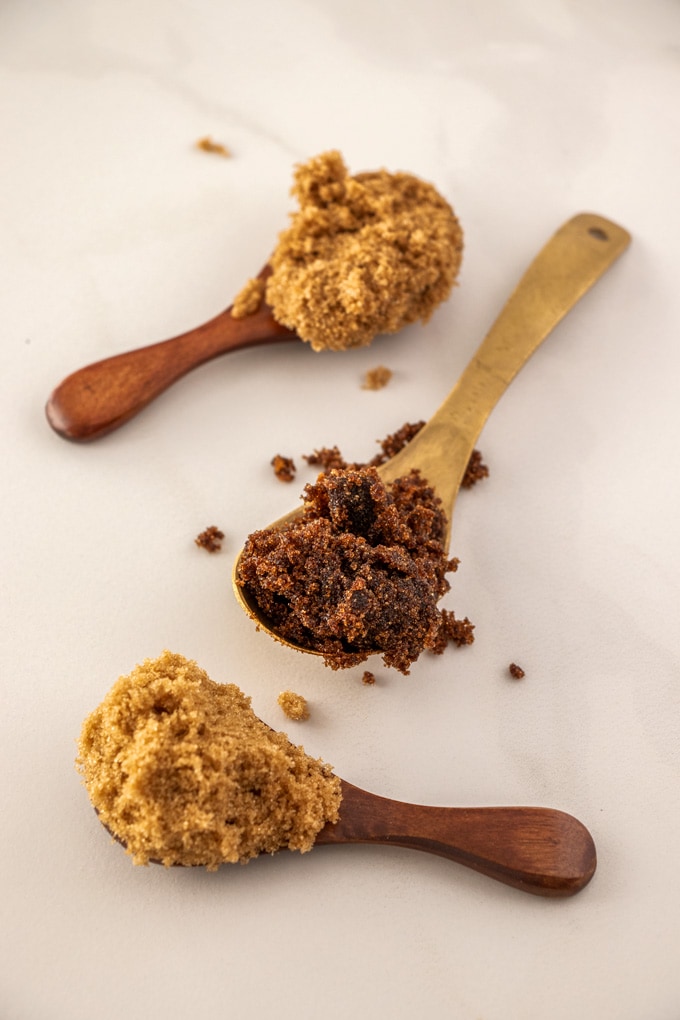
Top to bottom – Dark Brown Sugar, Dark Muscovado Sugar, Light Brown Sugar
If you don’t have, or can’t get, molasses you could also use other syrups like treacle, maple syrup or golden syrup. The last two will give a slightly different flavour but delicious nonetheless.
Names / Variants
Light Brown Sugar | Dark Brown Sugar | Muscovado Sugar | Molasses Sugar | Barbados sugar
What is cane Sugar
Cane sugar is sourced only from sugar cane (different from granulated sugar which is sourced from both sugar cane and sugar beets). It is a little less refined but can be used the same way as regular granulated sugar.
What is demerara sugar?
Demerara sugar (shown above) is a type of only partially refined cane sugar. It has a larger sized crystal than granulated sugar and is nearly exactly the same as turbinado sugar. It has a lighter molasses flavour than brown sugar and its crunchy texture makes it wonderful for using as a topping on cakes or cookies or in a crumble or streusel topping.
Names / Variants
Raw Cane Sugar | Demerara Sugar | Turbinado Sugar
What is coconut sugar?
Coconut sugar is an unrefined natural sugar that can be used just like granulated sugar. It really has no nutritional values over regular sugar but it is a little less sweet and has a slightly nutty flavour.
A sugar experiment
To show how the different types of sugars can affect your baking, I took my absolute favourite chocolate chip cookie and made it with 6 different sugars or sugar combinations. All other ingredients, steps and cooking time are exactly the same as the standard recipe.
In this first image you can see the difference in colour that the different types of sugar gives the cookie dough.
- Control – Standard recipe which is part caster and part light brown sugar
- Using all caster sugar
- Using all white granulated sugar
- Using all light brown sugar
- Using all dark brown sugar
- A combination of caster and dark muscovado sugar
After baking, you can see they all look similar, aside from their colour. The bottom 3, all using versions of brown sugar, spread the least (but only by a slight amount). The top three are lighter in colour, especially numbers 2 and 3 which used all white sugar, just different types.
The thing I found most interesting was that number 2, using all caster sugar, spread the most and is flatter than the other 5.
Finally, after letting the cookies cool and breaking them open I found that #1 and #4, both the cookies with the light brown sugar, had the nicest texture and flavour.
Cookies #2 and #3, using all white types of sugar, didn’t have as much flavour although there wasn’t a big difference in texture.
Numbers 5 and 6, using the darkest of the brown sugars had a complex caramel flavour and were also denser and slightly chewier in texture.
Types of sugar and their best uses
- Granulated sugar: Baking (cookies and cakes) and as a sweetener in hot drinks.
- Caster sugar: The great all-rounder. Perfect for all baking, for meringues, pavlova plus anything you would use granulated sugar for. As it dissolves quickly it’s great when making panna cotta, caramel or syrup for cocktails too.
Most of my recipes are made using caster sugar, however to see it at it’s best try this Easy Vanilla Panna Cotta or these Massive Chocolate Swirl Meringues. - Icing sugar / Powdered sugar: It dissolves quickly so it’s perfect for use in icings, buttercreams and frostings as well as some candies and for dusting cakes and cookies after they’ve been baked.
See it in action in the Strawberry Buttercream here or in these Homemade Mint Slice Biscuits. - Pure Icing Sugar: The same as icing sugar but without the corn flour. Whilst not absolutely necessary, this sugar is perfect if you’re making french macarons.
- Light brown sugar: wonderful in cakes and cookies as it provides more moisture. In cookies it will give them a slightly chewy texture.
I use it in many recipes from this Blueberry Cake to my Chunky Chocolate Chip Cookies. - Dark brown sugar: Also great in cakes and cookies. It has slightly more molasses than light brown sugar so a slightly more complex flavour.
Great for rich desserts like these Salted Butterscotch Chocolate Fudge Brownies. - Muscovado sugar / Molasses sugar: These really dark sugars are gorgeous used in fruit cakes and christmas cakes.
They’re also great in cookies and brownies like this Chocolate Brownie Pie. - Demerara sugar / Turbinado sugar: Great for toppings like streusel and crumbles or even for just scattering over the top of cakes before baking for a little crunch.
See demerara sugar in action here on these Nutella Hand Pies. - Coconut sugar: An unrefined natural sugar with a slightly nutty flavour.
This post may contain affiliate links that earn me a small commission for my referral, at no extra cost to you. Thank you for supporting Sugar Salt Magic.

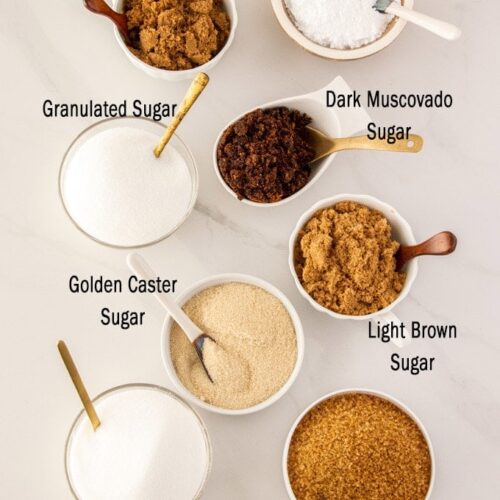
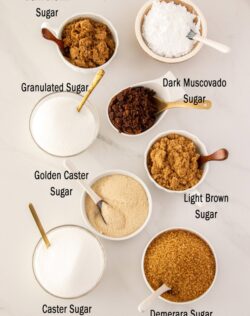
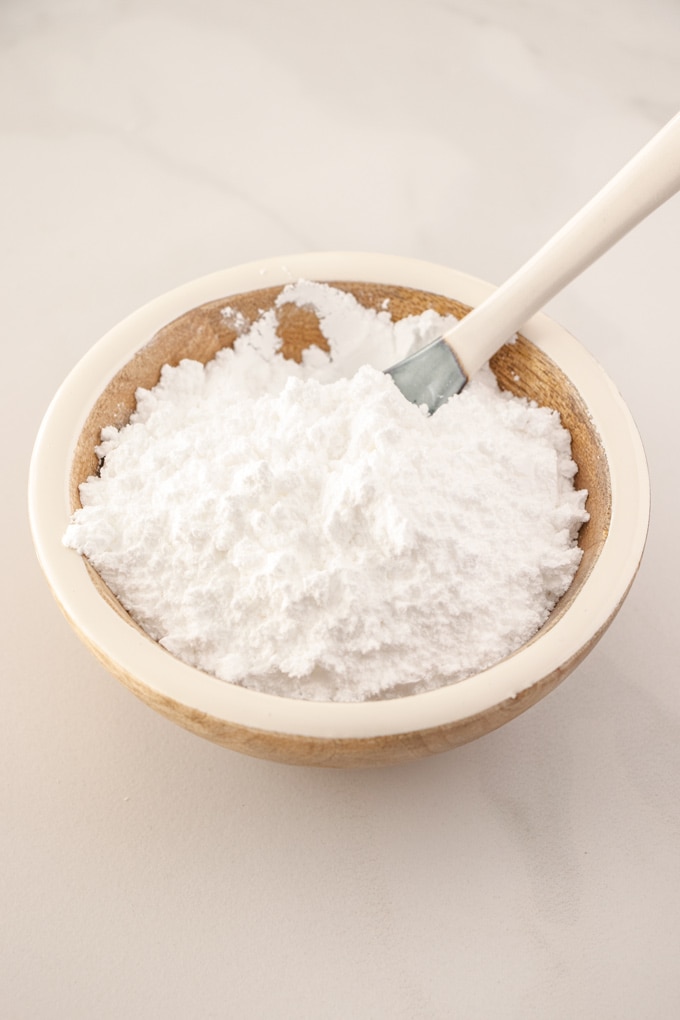
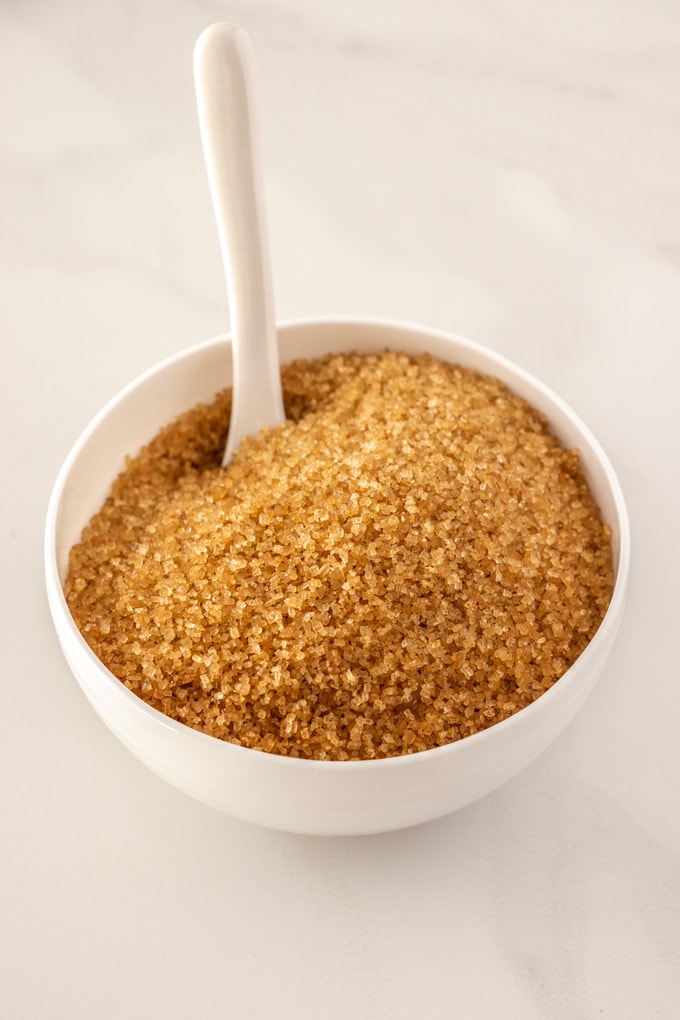
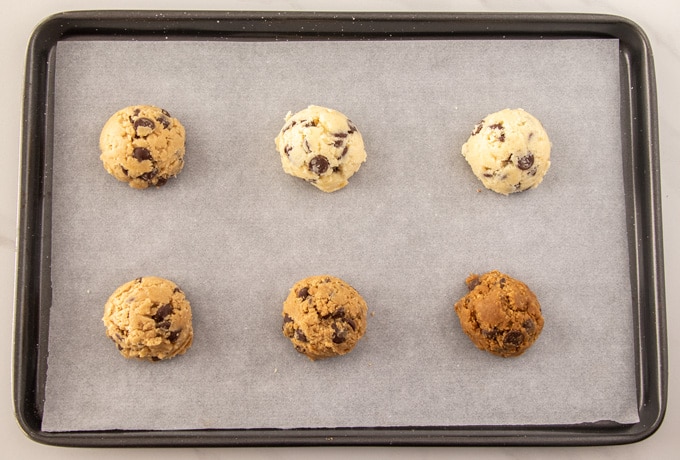
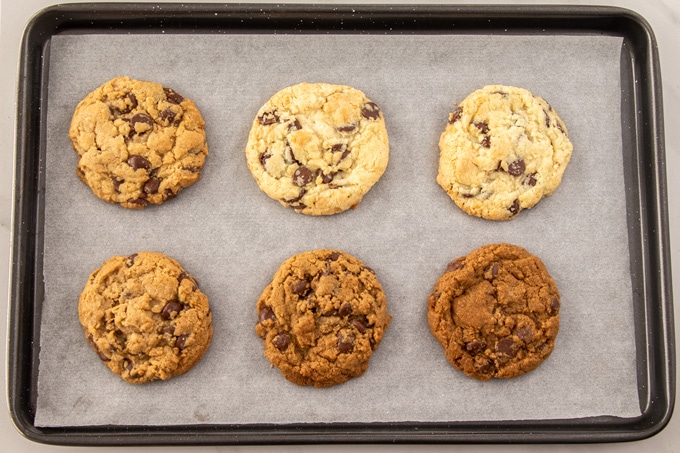
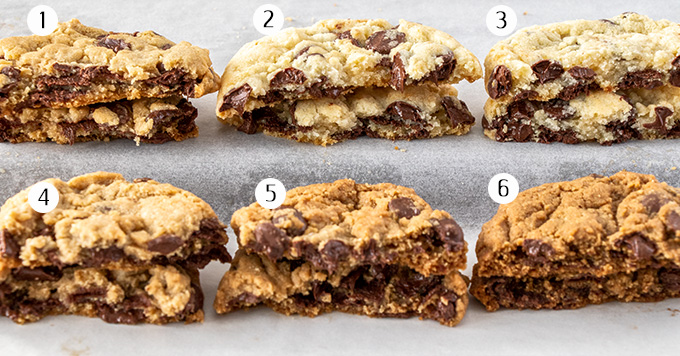
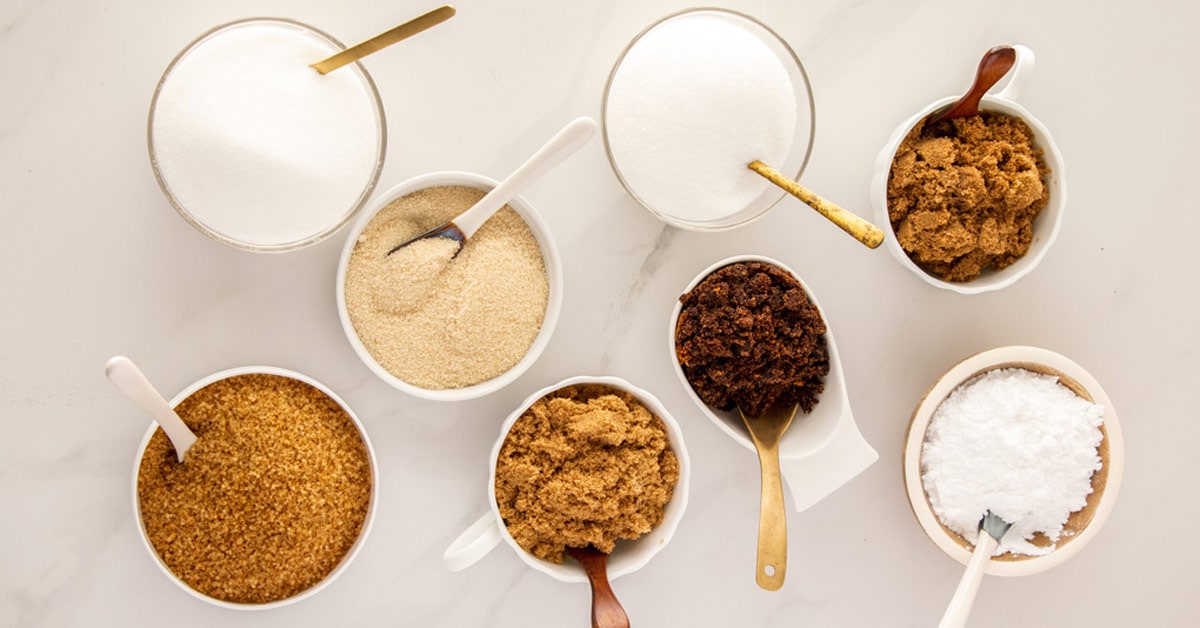
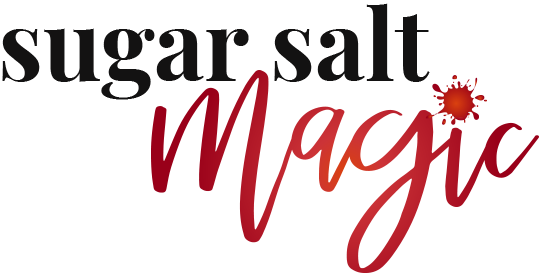
17 Comments on “Common Types of Sugar in Baking (Baking Essentials)”
Thank you so much for the sugar experiments and all of the insights and details.
What an enjoyment your page, it is to the point and it was a pleasure to navigate through it.
Thank you so much, you are phenomenal!
You’re welcome 🙂
Hi,,,
It was a pleasure reading your article and its beautifully put details.
Unlike many other web sites ,yours is very usefull and practically proven.
Was wondering if you have ever experienced mixing sugars with nutts or seeds, (Walnuts, Almonds ,pistachios and tahini ….)??and if you have then could you give us some useful guides on them please.
Thank you very much for sharing your knowlge with the rest.
I’m so happy you enjoyed it. I’ve never tried mixing nuts with the sugar but now I’m definitely intrigued to try it.
Just joined the fortunate folks that were lucky enough to find your site. Your presentations are thoughtful and inspiring. Articles like this one on common types of sugar, are real gems to the new or unacquainted cook or baker, and even to the practiced baker who wants to explain what they are doing, and why they do it, to an understudy of any age. (Words made easier is always a blessing).
Thank you lady!
So happy it’s helpful, Mare.
This article is very informative and thorough. You might like to add/include Palm Sugar – which is called for in some Thai cooking, and can be found in your local Asian food market. It’s very hard at first, but will soften with working, and has a light flavor. Brown & white sugar are usually too sweet to substitute.
Thanks Sage. I often use palm sugar in cooking but not so much baking. It is lovely. This post is more centred around baking but thank you so much for your thoughts.
Excellent article explaining various types of sugars! Experimenting with sugar combinations in a chocolate chip recipe is a clever way to see and taste the affects of them.
Thank you so much Carol
wow!! what a thorough post- I never knew that brown sugar and Demerara were actually different!!
thank you for sharing!
This is a wonderful post. Who knew there was so many different type of sugar and that something so simple can be so complex!!
But interesting as a baker, I have all of these sugars (except standard granulated) in my pantry at all times.
Fabulous post Marie. Thanks !
Thanks so much Pamela. I hope it’s helpful ?
Marie, what a fascinating post! I never really knew what caster sugar was, although I do make my own superfine sugar in the blender. Turns out it’s the same thing! I love how you explained how to make your own sugars at home – icing sugar, brown sugar, caster sugar. I always have regular sugar on hand, but too often run out of the specialty sugars. And I hate paying more for the specialty sugars. Also, I didn’t know a tablespoon in Australia is 4 teaspoons! That must cause some confusion.
Your cookie experiment was awesome!. It’s so cool being able to see the results side by side. It’s so useful for developing recipes to know what the effects of the sugar will be. That must have been a lot of hard work. Thanks so much for sharing that with us!
Thanks so much Kelly. I put quite some time into it, so I’m glad it’s helpful 🙂